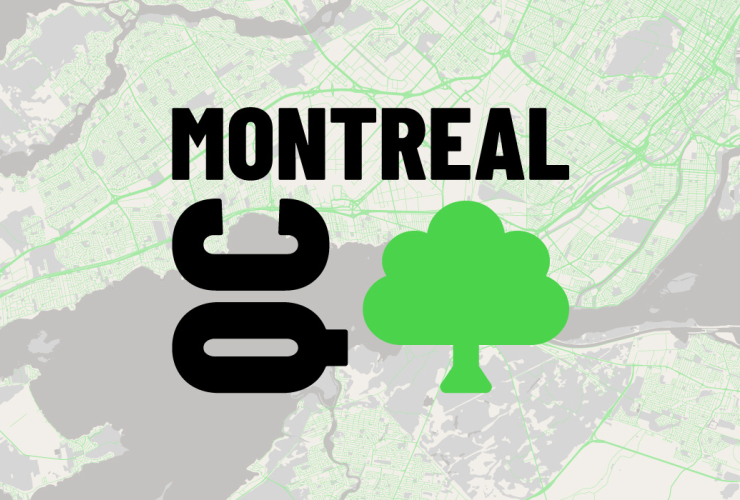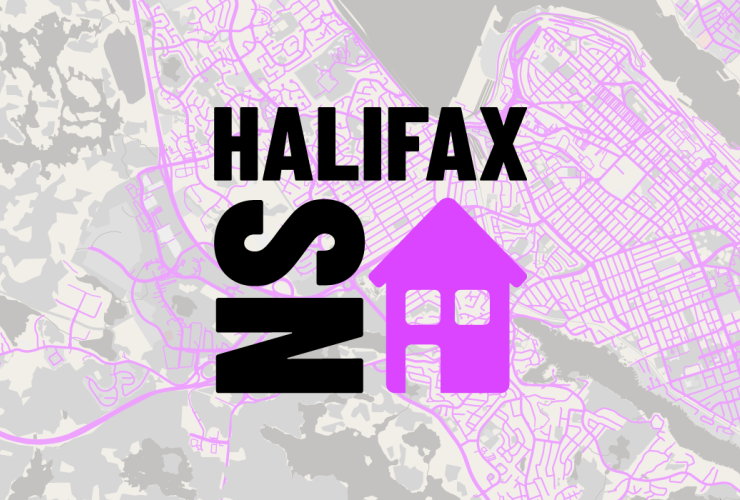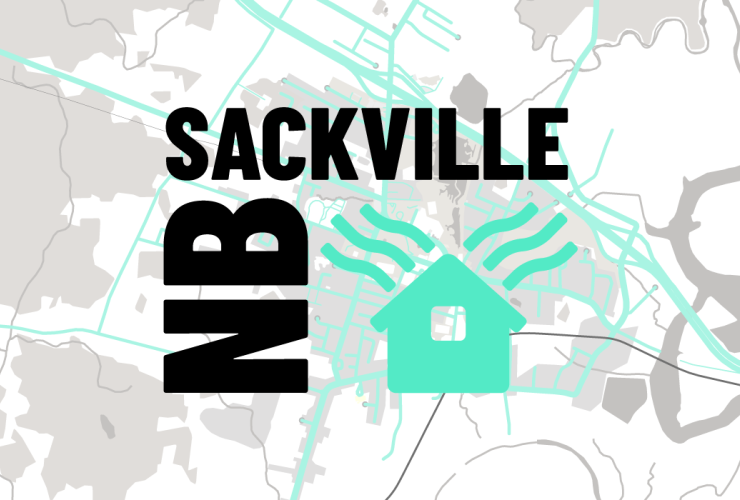
Saskatoon sees bright future in solar energy
Saskatchewan's biggest city is harnessing the sun to meet its climate goals — and push a fossil fuel-heavy province toward renewable energy.
Over the last six months, Canada's National Observer has been looking into what's working and what's failing in cities across Canada as they rise to the challenge of fighting climate change. In a 13-part series, we will be taking you across the country, province by province, for a look at how cities are meeting the climate emergency with sustainable solutions.
By Julia Peterson | Part 9 of Sustainable Cities
August 3rd 2021
In Canada's sunniest province, Saskatoon is hoping to harness solar energy in its transition away from fossil fuels — by 2036, all new homes in the city will be required to maximize their solar panel coverage.
In Canada's sunniest province, Saskatoon is hoping to harness solar energy in its transition away from fossil fuels — by 2036, all new homes in the city will be required to maximize their solar panel coverage.
The average two-person household in Saskatchewan uses about 5,200 kilowatt-hours of electricity per year, according to SaskPower. An average residential solar panel setup in Saskatoon could produce approximately 1,350 kWh per year.
Installing solar panels may be expensive, but it pays off: SaskPower's net-metering program allows Saskatoon residents with solar panels to sell power back to the utility and save on their electric bills.
In Saskatchewan, signs of the province's reliance on resource extraction dot the landscape, from oil derricks standing in flat southern Prairie fields to mines carved out of the forests in the north.
Now its biggest city is working to change the vista, at least within city limits. By 2036, all new homes in Saskatoon will be required to maximize their solar panel coverage. The hope is that someday in the not so distant future, the glint from blue solar panel covered rooftops will dominate the scenery along banks of the South Saskatchewan River.
In a province where more than 80 per cent of the province’s electricity is still produced from fossil fuels, Saskatoon is trying to shift as much electricity production to renewable energy as possible. The city's goals are laid out in its Climate Action Plan which aims to reduce CO2 emissions by more than 54 million tonnes by 2050, says Jeanna South, the city's sustainability director.

Jeanna South, sustainability director for the City of Saskatoon, says the city is helping homeowners pursue green options as part of its push to lower Saskatoon's carbon footprint. Photo submitted by Jeanna South
Saskatchewan is aiming to bring down greenhouse gas emissions by 16% from 2018 levels.
Provincewide, Saskatchewan is aiming to bring down greenhouse gas emissions by 16 per cent from 2018 levels. In particular, the province highlights efforts to reduce emissions associated with agriculture, drive down energy consumption in government-owned buildings and shift to renewable energy sources. There are huge challenges, however — 30 per cent of the province’s electricity still relies on coal. Sask Power hopes to reduce its own greenhouse gas emissions by at least 50 per cent from 2005 levels by 2030.
Saskatoon’s plans tie into the provincial renewable strategy. Solar generation capacity has already risen tenfold from 2014 to 2020, as solar panels are installed on residential, institutional, commercial and industrial buildings. And while there is a long wait before they become mandatory in new residential builds, South says the city is working hard to help homeowners pursue other green options in the meantime.
One recently passed measure is the Home Energy Loan program, which allows homeowners to access low-interest loans to install energy efficiency retrofits or make environmentally sustainable improvements.
Saskatchewan is aiming to bring down greenhouse gas emissions by 16% from 2018 levels.
Provincewide, Saskatchewan is aiming to bring down greenhouse gas emissions by 16 per cent from 2018 levels. In particular, the province highlights efforts to reduce emissions associated with agriculture, drive down energy consumption in government-owned buildings and shift to renewable energy sources. There are huge challenges, however — 30 per cent of the province’s electricity still relies on coal. Sask Power hopes to reduce its own greenhouse gas emissions by at least 50 per cent from 2005 levels by 2030.
Saskatoon’s plans tie into the provincial renewable strategy. Solar generation capacity has already risen tenfold from 2014 to 2020, as solar panels are installed on residential, institutional, commercial and industrial buildings. And while there is a long wait before they become mandatory in new residential builds, South says the city is working hard to help homeowners pursue other green options in the meantime.
One recently passed measure is the Home Energy Loan program, which allows homeowners to access low-interest loans to install energy efficiency retrofits or make environmentally sustainable improvements.

By 2036, all new homes in Saskatoon will be required to maximize their solar panel coverage. Photo by Sarath SunilDutt / Pexels
The sunshine province Saskatoon receives an average of 2,389 hours of sunlight per year.
Saskatoon receives an average of 2,389 hours of sunlight per year.
Saskatoon is uniquely well-positioned to harness solar power. Saskatchewan is the sunniest province in Canada, and Saskatoon receives an average of 2,389 hours of sunlight per year. According to South, the average residential solar panel setup in Saskatoon could produce approximately 1,350 kilowatt-hours of electricity per year. As of 2016, according to SaskPower, the average residential energy consumption for a two-person household in Saskatchewan was just over 5,200 kilowatt-hours per year.
This advantageous geographic location was one factor that inspired Saskatoon homeowner Luc Bezaire to install solar panels on his roof nearly two years ago. Even though the initial cost was high, he knew eventually it would pay off in savings on his power bill while helping improve the environment.
 Saskatoon receives an average of 2,389 hours of sunlight per year.
Saskatoon receives an average of 2,389 hours of sunlight per year.Saskatoon is uniquely well-positioned to harness solar power. Saskatchewan is the sunniest province in Canada, and Saskatoon receives an average of 2,389 hours of sunlight per year. According to South, the average residential solar panel setup in Saskatoon could produce approximately 1,350 kilowatt-hours of electricity per year. As of 2016, according to SaskPower, the average residential energy consumption for a two-person household in Saskatchewan was just over 5,200 kilowatt-hours per year.
This advantageous geographic location was one factor that inspired Saskatoon homeowner Luc Bezaire to install solar panels on his roof nearly two years ago. Even though the initial cost was high, he knew eventually it would pay off in savings on his power bill while helping improve the environment.

Homeowner Luc Bezaire invested in solar panels nearly two years ago and has seen considerable savings on his power bill. Photo submitted by Luc Bezaire
There’s a shift in energy coming, and it’s not about throwing up your hands and acting like you can’t do anything. Every problem has a solution.
Luc Bezaire, Saskatoon homeowner
“We’re living in a world that’s looking at a transition — and that’s whether people want it or not,” he said. “There’s a shift in energy coming, and it’s not about throwing up your hands and acting like you can’t do anything. Every problem has a solution.”
A 2018 report by the Canadian Centre for Policy Alternatives found fewer than 20 per cent of Saskatchewan residents supported an immediate transition away from fossil fuels. However, over 60 per cent of those surveyed wanted the government to invest in wind and solar energy. A mere 3.7 per cent actively opposed investing in solar.
Since installing solar panels, Bezaire says his yearly power bill has dropped from over $3,000 to less than $600. And he is looking forward to seeing more of his neighbours take similar steps.
“When you look down the road, it’s the way of the future,” he said. “I think it would go a long way towards offsetting future increases in power generation — if we can control the growth of coal-fired power plants or gas-fired power plants through solar production, that’s all to the good.”The high cost of solar panel installation, which is a daunting factor for many otherwise enthusiastic homeowners, has dropped significantly over the past decade.
Bezaire notes the high cost of solar panel installation, which is a daunting factor for many otherwise enthusiastic homeowners, has dropped significantly over the past decade. If this trend continues, he said, “future builders will be negligent in their planning if they don’t plan for solar.”
Shane Wiedman, CEO of the Saskatoon-based solar panel installation company Sundawg Solar, agrees.
Since he started it four years ago, it has become more efficient every year, he said. “The costs have come down; the efficiency of these things are just getting better and better all the time.”

Sundawg Solar CEO Shane Wiedman expects to see his business grow thanks to the City of Saskatoon's residential solar mandate. Photo submitted by Shane Wiedman
Once you invest in solar, realistically, your price will never increase after that. You have a locked-in price that you pay for.
Shane Wiedman, CEO of Sundawg Solar
Wiedman says solar energy is “one of the best investments you can make” to reduce power charges. He believes the pending residential solar mandate will be a boon to his business and put more money in the pockets of his neighbours.
“It’s the old question: if you could have locked in your gas prices at 45 cents per litre 20 years ago, knowing they would never increase, you would have done that?” he asked. “Once you invest in solar, realistically, your price will never increase after that. You have a locked-in price that you pay for.
“Then, once you pay that off, everybody else’s price of power is going to continue to rise while yours is just going to stay exactly where it was.”
In the long term, the financial advantages can be dramatic. SaskPower, the Crown corporation operating as the principal electric utility in Saskatchewan, offers a net-metering program for homes generating solar energy. Any excess power provided back onto the grid is priced at about 7.5 cents per kilowatt-hour, about half of the 14 cents residential customers pay for the same amount of power. Factoring in these credits and an initial average cost of $21,500 to install solar panels on a residential house, SaskPower estimates homeowners can recoup their initial investment in 15 to 17 years.
Saskatoon homeowners who live within the city’s 1952 boundaries, and are served by Saskatoon Light & Power instead of SaskPower, can benefit from one-to-one net metering for any solar energy they generate and recoup their investment that much faster.
Requiring solar panels on Saskatoon roofs is not the largest component of the city’s Climate Action Plan. But by 2050, the city estimates this measure will save just over five million tonnes of CO2.One critical benefit of solar panels becoming the norm in Saskatoon is increased energy literacy and acknowledgement of options beyond oil and gas.
According to Jason Praski, the principal of Saskatoon firm Exa Energy Consulting, it’s a decision with very little downside.
“Of course it will help with the target of reducing our community’s greenhouse gas emissions,” he said. “It’s free real estate on rooftops, which is something other organizations have understood and agree that it’s a really good place for things like solar panels to be placed.
“The local economy gets a benefit. There’s a lot of reputable solar designers, installers, electricians, contractors, et cetera who will hopefully gain business and pay local taxes.”
Praski also sees another critical benefit to solar panels becoming the norm in Saskatchewan’s biggest city: increased energy literacy and acknowledgement of options beyond oil and gas.
“In Saskatchewan, we don’t necessarily see a lot of leadership in explaining to us where our electricity comes from and why we should be doing things like this,” he said. “So when a homeowner embarks on this project, I think there’s a lot of learning that comes with it — about using the sun for energy production, reducing greenhouse gas emissions, reducing your carbon footprint, the economic payoff and more.”
Keep reading

Protecting biodiversity in Montreal with Canada's largest city park
By Matthew Hague | News | July 12th 2021Sustainable Cities

Designing its way to a cleaner future, Halifax reaches for net zero
By Lindsay Jones | News | July 5th 2021Sustainable Cities

In Sackville, N.B., students demanded climate change solutions, and they got what they asked for
By Zack Metcalfe | News | June 28th 2021Sustainable Cities
Once you invest in solar, realistically, your price will never increase after that. You have a locked-in price that you pay for.
Shane Wiedman, CEO of Sundawg Solar
Wiedman says solar energy is “one of the best investments you can make” to reduce power charges. He believes the pending residential solar mandate will be a boon to his business and put more money in the pockets of his neighbours.
“It’s the old question: if you could have locked in your gas prices at 45 cents per litre 20 years ago, knowing they would never increase, you would have done that?” he asked. “Once you invest in solar, realistically, your price will never increase after that. You have a locked-in price that you pay for.
“Then, once you pay that off, everybody else’s price of power is going to continue to rise while yours is just going to stay exactly where it was.”
In the long term, the financial advantages can be dramatic. SaskPower, the Crown corporation operating as the principal electric utility in Saskatchewan, offers a net-metering program for homes generating solar energy. Any excess power provided back onto the grid is priced at about 7.5 cents per kilowatt-hour, about half of the 14 cents residential customers pay for the same amount of power. Factoring in these credits and an initial average cost of $21,500 to install solar panels on a residential house, SaskPower estimates homeowners can recoup their initial investment in 15 to 17 years.
Saskatoon homeowners who live within the city’s 1952 boundaries, and are served by Saskatoon Light & Power instead of SaskPower, can benefit from one-to-one net metering for any solar energy they generate and recoup their investment that much faster.
Requiring solar panels on Saskatoon roofs is not the largest component of the city’s Climate Action Plan. But by 2050, the city estimates this measure will save just over five million tonnes of CO2.One critical benefit of solar panels becoming the norm in Saskatoon is increased energy literacy and acknowledgement of options beyond oil and gas.
According to Jason Praski, the principal of Saskatoon firm Exa Energy Consulting, it’s a decision with very little downside.
“Of course it will help with the target of reducing our community’s greenhouse gas emissions,” he said. “It’s free real estate on rooftops, which is something other organizations have understood and agree that it’s a really good place for things like solar panels to be placed.
“The local economy gets a benefit. There’s a lot of reputable solar designers, installers, electricians, contractors, et cetera who will hopefully gain business and pay local taxes.”
Praski also sees another critical benefit to solar panels becoming the norm in Saskatchewan’s biggest city: increased energy literacy and acknowledgement of options beyond oil and gas.
“In Saskatchewan, we don’t necessarily see a lot of leadership in explaining to us where our electricity comes from and why we should be doing things like this,” he said. “So when a homeowner embarks on this project, I think there’s a lot of learning that comes with it — about using the sun for energy production, reducing greenhouse gas emissions, reducing your carbon footprint, the economic payoff and more.”
Keep reading

Protecting biodiversity in Montreal with Canada's largest city park
By Matthew Hague | News | July 12th 2021Sustainable Cities

Designing its way to a cleaner future, Halifax reaches for net zero
By Lindsay Jones | News | July 5th 2021Sustainable Cities

In Sackville, N.B., students demanded climate change solutions, and they got what they asked for
By Zack Metcalfe | News | June 28th 2021Sustainable Cities
No comments:
Post a Comment